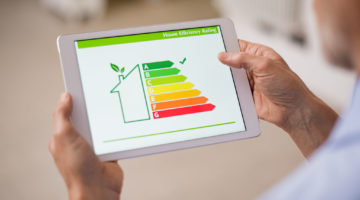
What is a SAP assessment?
SAP is an acronym that stands for Standard Assessment Procedure. It’s a set of reports that reflect the energy efficiency of a building.
What kind of building needs a SAP assessment?
Building regulations for all new residential dwellings since 2012 require a SAP assessment
How is a SAP assessment different to an EPC?
An EPC (energy performance certificate) is a document required by law to rent, buy, or sell any property in the UK. A SAP report includes an EPC, but also accounts for many other factors. It’s a lot more in-depth and comprehensive than a standalone EPC.
What does my SAP calculation mean?
SAP calculations are expressed as a number that reflects the energy costs of running a property. A score close to zero shows the highest energy costs for a property, while a score of 100 represents a zero-energy cost home. If your SAP score is higher then the building is able to generate more energy than it’s estimated to consume, meaning that you may be exporting extra electricity back to the national grid, potentially for a profit.
What does a SAP assessment take into account?
SAP assessments are based on 4 central elements
- The structure and fabric of the building (inc. insulation etc)
- The heating and hot water systems
- Lighting
- Renewable energy generation (eg, solar panes, wind turbines, etc)
What documents are required for a SAP assessment?
Every SAP will require the following:
- Full address and postcode
- Floorplans
- Elevation drawings for each elevation
- Sectional drawings
Supporting information and documentation may also be required regarding:
- Construction
- Lighting
- Windows, roof lights, and doors
- Accredited details
- Ventilation
- Heating system
- Cooling system
- Hot water system
- Any renewable energy systems
Does the SAP assessor need to visit my property?
Unlike a standalone EPC, a SAP calculation does not require a visitation to the property. This may seem counter-intuitive since a SAP report is a much more in-depth measure of efficiency, but in fact the amount of substantiating evidence for property works is generally enough that the SAP can be done without an assessor ever having to attend.
How is a SAP assessment carried out?
SAP Stage One: Design (Draft Stage)
The assessor uses plans provided by the architect/designer to prepare initial figures for the floor area of the property (including individual rooms); basic dimensions and of the building, including all windows and external doors; identify areas of heat loss, across the floors, walls and roofing.
This allows the assessor to calculate the thermal performance of the building, and come up with U values for each element. This is the first and most fundamental part of a SAP assessment.
The assessor then uses the SAP software to determine if the building will comply with building regulations for energy efficiency. We always recommend that a SAP is first carried out at this stage of the process since recommendations can then be given to the architect if the property requires redesign to comply with regulations.
SAP Stage Two: Design (Final Stage)
This stage is essentially a finalisation of the first stage, after the property design has gone through as many changes as necessary in order to satisfy the SAP requirements and been signed off by the assessor, client and architect. The data is then finalised and submitted, to produce a Predicted Energy Assessment report.
SAP Stage Three: Build (Draft Stage)
This is the point at which the SAP assessor will require an air pressure test. The client or architect will be required to provide to the SAP assessor, though many SAP specialists will be able to advise on local air pressure technicians. It’s important to make sure that your SAP assessor is aware of any variations in the result of the air pressure test from the specification.

At this point, there is a chance that the air pressure test may cause the building to fail building regulations. In this case, your SAP assessor should be able to advise you on remedial action to rectify the situation and bring you back up to spec.
The other thing that your SAP assessor is likely to do at this stage is to check that the building is registered on the Government central database of national property addresses. While it is up to the client to arrange for the property to be added to this register, it’s important that it’s done as it’s necessary to finalise the assessment.
SAP Stage Four: Build (Final Stage)
Once the construction is complete, the assessor creates an EPC certificate. This is a legal requirement and will be accessible on a public register. It’s also necessary for building regulations to issue the completion certificate.
Additional documents required by building control and provided by your SAP assessor are the SAP worksheet report and SAP data input report.
How can I get a SAP assessment done?
Fill out the form below and we’ll get back to you as soon as possible.












No Comments yet! Be the first one.